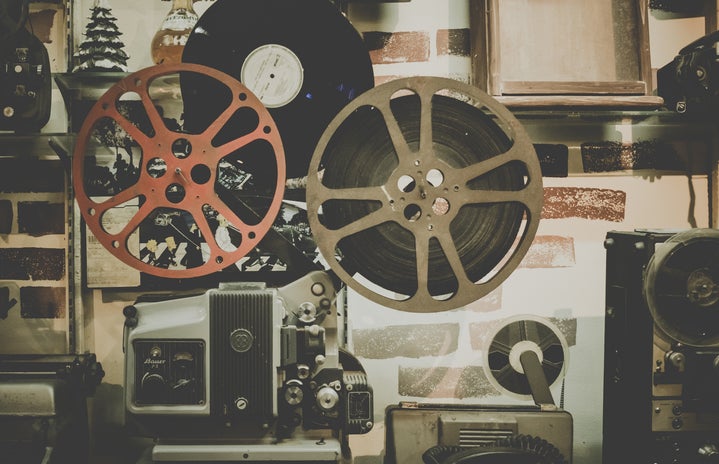The Swallows of Kabul (2019), directed by Zabou Breitman and Eléa Gobé Mévellec, is an animated tale of two married couples in 1998, living very opposite lifestyles in their secluded homes, but once they step outside are confronted with the reality of their conservative town of Kabul overrun by the radical Islamic group, the Taliban. The first couple, Mohsen and Zunaira, are a young liberal pair internally, but externally must follow the values and regulations the Taliban has set forward for the town. Mohsen is confronted with his own radical thoughts when he helps to stone a woman to death in the town centre and does not help Zunaira when she is cornered by members of the Taliban. After the incident involving Zunaira and the Taliban, Mohsen and her get into a physical fight, in which he accidentally falls back, hits his head and is killed. Zunaira is then brought to jail for his murder. The second couple, Atiq and Mussarat, follow the values the Taliban has set in the town inside and outside of the home. Mussarat, who is terminally-ill with cancer, is a devoted wife, making sure Atiq is always well taken care of even while sick and Atiq serves the Taliban-run community as the warden of the women’s prison. This is where he meets Zunaira, who will eventually be stoned in front of a large crowd for her crimes, and he gradually feels empathic towards her situation. At the end of the film, Zunaira and Mussarat switch places, where Mussarat is killed by stoning, Atiq is shot and killed for allowing them to switch places and Zunaira runs to freedom.
The Swallows of Kabul tears down and breaks apart a story in a very harsh and structured realistic atmosphere. Developers of the film use technical details to bring the story down to a humanistic level of understanding, and doing so by juxtaposing the unfortunate reality of Taliban-run Afghanistan in 1998 with the calming moods and methods of watercolour, sound, character development, story writing and timing. Using these components, audience members were lucky to enjoy an enlightened cinematic experience.
The main attraction of The Swallows of Kabul was the use of sound to keep attention. Somehow, background sounds within the film didn’t overwhelm the story and instead faded nicely. It was understood, by just the sound, that the film was based in a chaotic setting, a town filled with violence and unrest, but was still kept at a steady volume to indicate a submissive, quiet and fearful town. For example, scenes such as the execution of a woman in the town square by stoning could have been a cruel and action-packed scene, however, the viewer is frozen when nothing but the sound of rocks hitting the woman and then her falling to the ground is presented. From an audience perspective, it created a realistic and interactive experience. Even sound effects found only in most non-animated films, are found in this film. For example, the sound of footsteps walking through the unkempt streets of Kabul and chalk sliding against the wall as Zunaira drew her portraits, create sensible and realistic scenes that take into account every part of the audience’s cinematic experience.
A unique, but difficult concept of the film, was that the story was told from four different perspectives for the entirety of the film. Every character is slightly stereotypical in their own respect, with the conservative man and his devoted wife, fully committing to respecting the regulations of their society and the liberal couple held captive by the constraints of life overrun by dictators. Although cliché, it was parallel to real-world 1998 Afghanistan; where not everyone was submissive or fully committed to the Taliban. If it were told from the perspective of just one character, whether that be female or male, the film would not have been as well-rounded or understood by the viewer because of the importance of interpreting the storyline from a number of personalities and lifestyles. Sometimes one can assume everyone in a town, such as the one of Kabul, would move and think similarly because they are forced to do so by those with power. The Swallows of Kabul challenges that way of thinking and surpasses it by developing moral characters in an immoral and violent world.
A special component of this film talked about by viewers extensively as very unique, is the use of watercolour painting. Once again, we see shaded and light colours to accentuate the peacefulness within the unrest nested in the background. Using soft strokes, the content creators and painters built each visual aspect of the film, from the broken-down buildings, to the baby blue sky, to the characters themselves with no hard edges. Because of this use of art, every observable element in The Swallows of Kabul, which could have easily been interpreted completely differently with any other artistic expression, was viewed as simple and down to earth. The reason this is very misunderstood and slightly confusing to the viewer is that those captive under the rule of radical groups in the media, such as the Taliban, are associated under the term loyalist, with many believing they choose, and are not forced, to live under this brutalist lifestyle. With the harsh contrast of the setting of the film and the gentle watercolour, the filmmakers created a serious, but non-action-packed film. Because of this reading of the film, heart-tugging emotion is triggered as a reaction to the quietness of the colours.
Timing also became a strategy for content creators of the film. Creators initiated a slow beginning, in which they carefully drew out the background of each character as a way to allow the viewer to fully engulf each lifestyle and absorb the character’s personalities. As the story begins to unfold and the characters of Zunaira, Mussarat and Atiq’s lives begin to intertwine, the story slowly but dramatically starts picking up speed. By the end of the film, the scenes jump from one to the other quickly as the drama unfolds and the viewer hopes all the characters will escape the town. This is especially evident in the last few scenes, where Zunaira and Mussarat switch places.
The Swallows of Kabul is a compelling story of the lack of freedom one can experience when under extreme control. The film is incredibly unique in its juxtaposition of seriousness in a calming atmosphere. A western viewer is taken on a completed journey from beginning to end of a completely opposing culture, in which many believe they already know. The Swallows of Kabul took this into account and created a masterpiece challenging these thoughts with its use of animated contrast.



